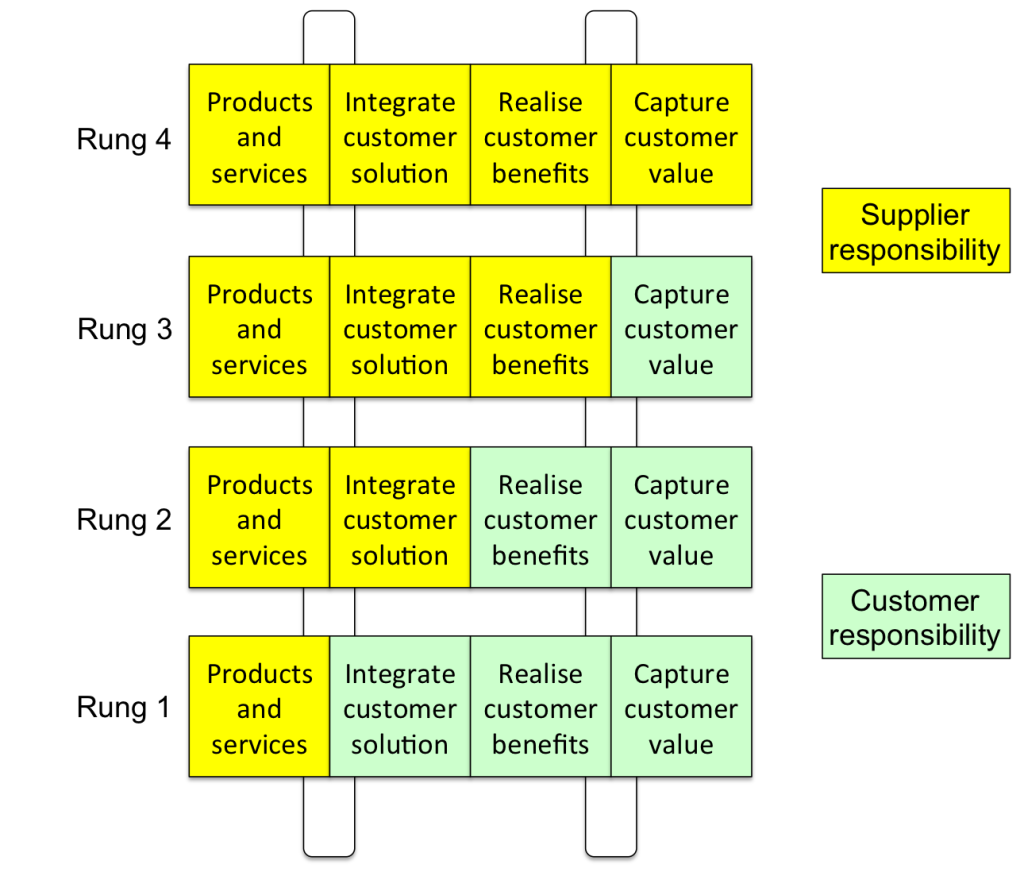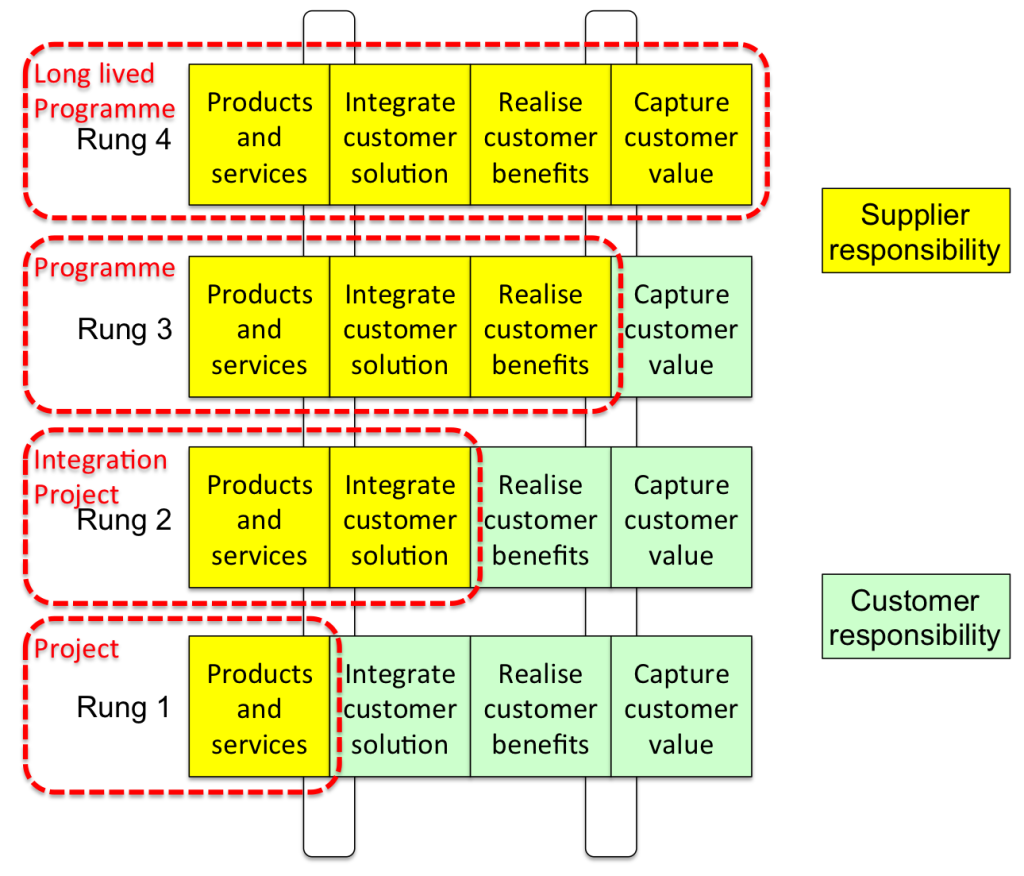The Value Ladder highlights how a supplier contributes to the success of the customer. The way I see it programmes and projects can be mapped onto the Value Ladder.
Value Ladder
Jan Dyer Torsilieri and Chuck Lucier suggested that suppliers need to Climb Up the Value Ladder for their customers.
The most successful companies will focus on capturing value, not just creating it. While it may seem counterintuitive, the most powerful strategy is to leverage knowledge to take increasing levels of responsibility for ensuring your customers’ success. Companies that adopt this strategy will build a portfolio of businesses that gives customers a choice of how much responsibility they assume — and how much they are willing to pay for.
There are four rungs in the Value Ladder, from lowest to highest:
- Product and services
- Integrate solution
- Realise benefits
- Capture value
On the lowest rung the supplier sells products and services into the customer. At the next level the supplier becomes responsible for integrating diverse products and services into a “solution”. Suppliers on the third rung assume responsibility for the customer realising the benefits of the solution. On the highest rung the supplier takes responsibility for some or all of the customer’s success – capturing the value of the initiative.
Torsilieri and Lucier believe companies need to have offerings on more than one rung of the ladder.
Because the best way to capture the value of information and knowledge developed in a business is to use it to create businesses on other rungs of the ladder, successful companies will construct a portfolio of ladder-related businesses. Customers can then choose the rung — and the value proposition — they prefer. For the provider, higher rungs involve much greater value added (and captured) for a smaller number of more targeted customers.
This progression is from the perspective of the supplier. In reality all four activities occur at the same time and what changes is who is responsible for which activity. The diagram attempts to show this – as the supplier responsibilities increase those of the customer decrease.
Programmes and Projects on the Value Ladder
I’ve previously explained the difference between programme, project, portfolio and product management. The Value Ladder offers a new perspective on this difference.
I think programmes and projects map nicely onto rungs of the Value Ladder. Projects sit on the first or second rung. On the lowest rung the project is about building/installing a product and/or providing some services to the customer. At the second level the project is about integrating the output of the various projects to create a coherent “solution”.
Programmes are on the third and fourth rung. At the 3rd rung the programme is finished when the customer has realised the benefits of the solution. The top rung is reserved for long lived programmes that are active until the customer has captured the value of the initiative.
References
Torsilieri, J. D. and Lucier, C. (2000, 1 October). Climbing Up the Value Ladder. strategy+business, Fourth Quarter 2000 / Issue 21. Originally published by Booz & Company

